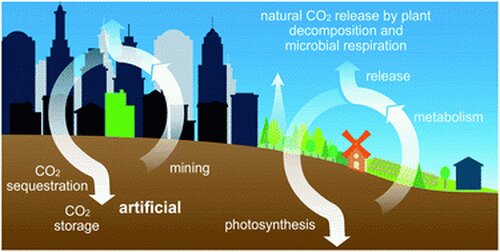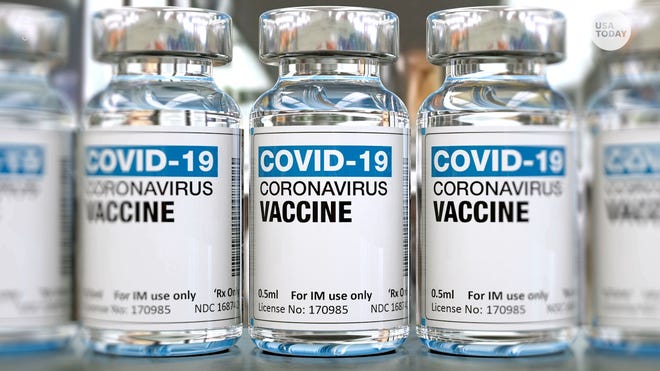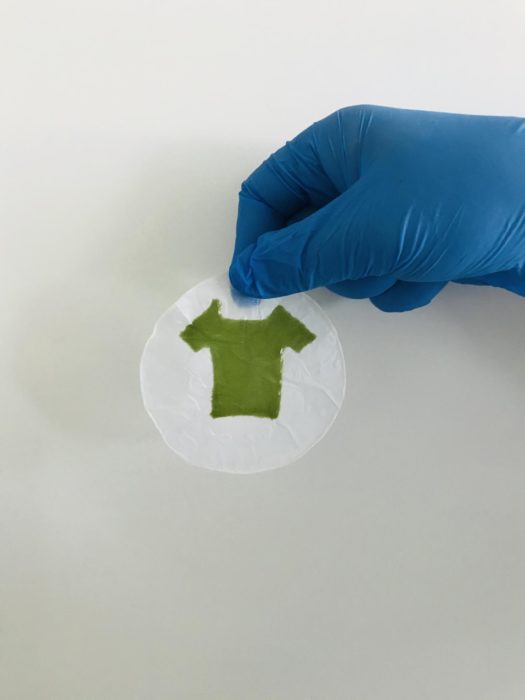May
10
2021
 The climate and environment are always changing, but this statement is not that meaningful unless you put it into the perspective of timescale. Over very short timescales, a few years, climate is extremely stable. Over very long timescales, millions of years, climate can change dramatically, turning lush rainforests into deserts. Over hundreds of years the climate has been relatively stable, except for natural oscillating cycles. Climate can even be relatively stable over thousands of years, but at this scale we do start to get into the bigger ice-age and glaciation cycles.
The climate and environment are always changing, but this statement is not that meaningful unless you put it into the perspective of timescale. Over very short timescales, a few years, climate is extremely stable. Over very long timescales, millions of years, climate can change dramatically, turning lush rainforests into deserts. Over hundreds of years the climate has been relatively stable, except for natural oscillating cycles. Climate can even be relatively stable over thousands of years, but at this scale we do start to get into the bigger ice-age and glaciation cycles.
On this backdrop we have the anomalous forcing of global average temperature increases over the last 150 years that cannot be explained as part of any natural cycle. This does correlate with the release into the environment of free carbon dioxide, the carbon component of which had been previously sequestered for millions of years in the form of fossil fuels. Obviously we are in the midst of a big conversation about how to reduce the industrial release of more carbon to limit effects on the environment. While sincere efforts are being made, the pessimistic view is that we simply lack the political will to do what needs to be done, and there are too many economically vested interests in the cheap energy provided by fossil fuel. We will eventually convert to cheaper and cleaner renewable energy sources, because market forces are moving in that direction, but probably not before we burn through our entire “carbon budget”.
Continue Reading »
May
07
2021
 We are at a critical point in this pandemic. Worldwide the pandemic is actually more active now than ever. There have been over 156 million cases, and the world is seeing almost 800k new cases a day. The recent peak is mainly due to India, but infections continue throughout the world. The high number of cases also increases the risk of new variants emerging. India also shows us how quickly medical resources can be overwhelmed with catastrophic results. They ran out of oxygen – which is critical to keeping severe COVID patients alive.
We are at a critical point in this pandemic. Worldwide the pandemic is actually more active now than ever. There have been over 156 million cases, and the world is seeing almost 800k new cases a day. The recent peak is mainly due to India, but infections continue throughout the world. The high number of cases also increases the risk of new variants emerging. India also shows us how quickly medical resources can be overwhelmed with catastrophic results. They ran out of oxygen – which is critical to keeping severe COVID patients alive.
Yet, with each wave there was the prevailing sense that this was the worst we’ll get, and now we are rounding the corner. So far, this has been wrong every time. Of course this pandemic must end eventually, the question has always been how much death, morbidity, and economic damage would it cause in the meantime. The primary reason for the next worse wave of the pandemic has largely been that people eased off on pandemic protocols. They stopped wearing masks and social distancing and started gathering in large groups. And each time the virus made us pay for it.
But now, despite being in the middle of the biggest wave so far, the situation is changing, because now we have multiple safe and effective vaccines. In the US there are two mRNA vaccines, from Moderna and Pfizer-BioNTech, in addition to the J&J vaccine. Other than a minor hiccup with extremely rare blood clots, these vaccines have a great safety profile. In states with high vaccine uptake the virus is getting under control, and restrictions are starting to be safely lifted. Life is partly getting back to normal – thanks entirely to the vaccines.
But we are facing two problem – entirely of our own making. The first is that we are in a race against time. We have to vaccinate enough of the world to achieve herd immunity before new variants emerge that are resistant to the vaccines. Also, we don’t know how long immunity from the vaccines last, but it may be something around a year. So when we get to a year out from the first vaccines given, we need to do it all over again with booster shots. Perhaps even more importantly, we are running up against vaccine hesitancy, which may ultimately prevent us from getting to herd immunity. That would be a tragedy.
Continue Reading »
May
06
2021
 People are extremely social animals, and being social means that you need to learn the rules that govern social interaction and society. This applies to social animal species as well. Corvids, for example, can remember the faces of animals that harm or threaten them and will punish them later. They will also punish their own members for not following the rule – fail to warn us when a predator is coming and we won’t warn or protect you next time. Young children also are quickly socialized, and learn that there are rules of fairness. Fairness also means that you cannot change the rules on the fly in order to favor your own interests over others. Children will try, for example, to make up new rules to a game in the middle in order to accommodate what has already happened. Other children are likely to immediately see this as unfair and loudly protest.
People are extremely social animals, and being social means that you need to learn the rules that govern social interaction and society. This applies to social animal species as well. Corvids, for example, can remember the faces of animals that harm or threaten them and will punish them later. They will also punish their own members for not following the rule – fail to warn us when a predator is coming and we won’t warn or protect you next time. Young children also are quickly socialized, and learn that there are rules of fairness. Fairness also means that you cannot change the rules on the fly in order to favor your own interests over others. Children will try, for example, to make up new rules to a game in the middle in order to accommodate what has already happened. Other children are likely to immediately see this as unfair and loudly protest.
We continue to engage in this behavior as adults. We’re just more adept at hiding it, or trying to justify it with some rationalization. One of the more blatant examples of this is gerrymandering. I have never heard anyone actually try to defend the practice. At best you get the lame excuse of – well, the other side will do it when they get a chance, so we have to do it to level the playing field. Or, more brazenly, they will just do it because they have the power to do so and think that this is justification enough.
Gerrymandering is the process of drawing congressional districts in order to favor your party. It has been accurately described as politicians choosing their voters, rather than voters choosing their politicians. It is one of the most obvious flaws in our current democratic system (referring to the US). It’s difficult to get rid of, however, because it can benefit both sides. The politicians in power benefit from gerrymandering, so it is self-sustaining. Gerrymandering is used in a couple of ways. One is to create safe seats, where one party has a lock and the other party has no chance. Safe seats favor extremism because candidates never have to appeal to the middle. Gerrymandering can also be used to favor a party by giving them more congressional seats than their share of the voters.
Continue Reading »
May
04
2021
 Sometimes technology is developed to serve a specific purpose or need. At other times technology is developed simply because it can be, and then people search for an application. Probably most of the time there is a combination – the technology is developed with a vague idea of how it can be used, but then has to find specific applications. This is partly what makes the future of technology difficult to predict. It is easier to predict if a technology is plausible and can be developed, and more difficult to predict if or how it will be used.
Sometimes technology is developed to serve a specific purpose or need. At other times technology is developed simply because it can be, and then people search for an application. Probably most of the time there is a combination – the technology is developed with a vague idea of how it can be used, but then has to find specific applications. This is partly what makes the future of technology difficult to predict. It is easier to predict if a technology is plausible and can be developed, and more difficult to predict if or how it will be used.
That is what I feel about living materials. A recent paper presents advances in, “Bioprinting of Regenerative Photosynthetic Living Materials.” The technology for 3D printing with biological materials is advancing nicely, with the most obvious application being medical, such as the printing of skin for grafting, and hopefully one day the printing of functional organs. This process looks at 3D printing of photosynthetic material into a fabric.
The process uses cellulose as a non-living structure. Cellulose is the material in plants that gives them their strength. It is a durable, flexible, and strong material that has the ability to retain its strength. Now before you get too excited, cotton is mostly cellulose. We are already making our clothing out of cellulose, and have been harvesting plant fibers for this purpose for thousands of years. The ability to 3D print cellulose directly into a fabric material is nice, and may have some specific uses. In this case the cellulose is designed to contain living microalgae. These algae can survive for several days without additional water or nutrients, and they can undergo photosynthesis. This period can be extended by providing water and nutrients. The material can also be “regenerated” in that they can be reused by adding new microalgae, or combined with new material.
OK, so now what?
Continue Reading »
May
03
2021
 From one perspective art is mostly a science that we understand better at an intuitive rather than analytical level. This does not reduce the creative elements off artistic expression, but it does mean there is an underlying empirical phenomenon to be understood. Storytelling, for example, has a basic structure, with elements that serve a specific purpose. One of the more famous attempts at breaking down the structure of certain types of stories is the Hero’s Journey by Joseph Campbell, in which he explains the common elements of epic quests in literature, that hold true even in more modern storytelling like Star Wars.
From one perspective art is mostly a science that we understand better at an intuitive rather than analytical level. This does not reduce the creative elements off artistic expression, but it does mean there is an underlying empirical phenomenon to be understood. Storytelling, for example, has a basic structure, with elements that serve a specific purpose. One of the more famous attempts at breaking down the structure of certain types of stories is the Hero’s Journey by Joseph Campbell, in which he explains the common elements of epic quests in literature, that hold true even in more modern storytelling like Star Wars.
A recent study by German authors takes a similar look at the “feel good film”, which is not really a specific genre but more of a vague category. The “feel good film” is meant, as the name implies, to elevate the mood and be pleasant to watch. The authors point out that this is often a point of criticism by serious film critics, but simultaneously a point of praise from viewers. There is just as much of an art and science behind making a good feel-good film as any other type, so I think the criticism is unfair. I would focus more on the quality of any specific movie.
After extensive surveying, the authors found that the best formula for a feel good effect is the romantic comedy. The authors write;
“Often these involve outsiders in search of true love, who have to prove themselves and fight against adverse circumstances, and who eventually find their role in the community.”
Further, the authors found that the introduction of a “fairy tale” element served well to lighten the movie and enhance the feel-good effect. The movie that immediately came to mind when I read this was Enchanted, which seems to deliberately follow this formula (and it worked, extremely well). The authors also point out that such films require genuine drama and conflict. There appears to be a sweet spot – where we feel a real threat but we know the good guys are going to pull it out in the end. It’s like a rollercoaster – it’s simulated danger, but we know we are safe. In Enchanted the evil queen needs to seem genuinely menacing, for example.
Continue Reading »
 The climate and environment are always changing, but this statement is not that meaningful unless you put it into the perspective of timescale. Over very short timescales, a few years, climate is extremely stable. Over very long timescales, millions of years, climate can change dramatically, turning lush rainforests into deserts. Over hundreds of years the climate has been relatively stable, except for natural oscillating cycles. Climate can even be relatively stable over thousands of years, but at this scale we do start to get into the bigger ice-age and glaciation cycles.
The climate and environment are always changing, but this statement is not that meaningful unless you put it into the perspective of timescale. Over very short timescales, a few years, climate is extremely stable. Over very long timescales, millions of years, climate can change dramatically, turning lush rainforests into deserts. Over hundreds of years the climate has been relatively stable, except for natural oscillating cycles. Climate can even be relatively stable over thousands of years, but at this scale we do start to get into the bigger ice-age and glaciation cycles.
 We are at a critical point in this pandemic. Worldwide the pandemic is actually more active now than ever. There have been over 156 million cases, and the world is seeing almost 800k new cases a day. The recent peak is mainly due to India, but infections continue throughout the world. The high number of cases also increases the risk of new variants emerging. India also shows us how quickly medical resources can be overwhelmed with catastrophic results. They ran out of oxygen – which is critical to keeping severe COVID patients alive.
We are at a critical point in this pandemic. Worldwide the pandemic is actually more active now than ever. There have been over 156 million cases, and the world is seeing almost 800k new cases a day. The recent peak is mainly due to India, but infections continue throughout the world. The high number of cases also increases the risk of new variants emerging. India also shows us how quickly medical resources can be overwhelmed with catastrophic results. They ran out of oxygen – which is critical to keeping severe COVID patients alive. People are extremely social animals, and being social means that you need to learn the rules that govern social interaction and society. This applies to social animal species as well. Corvids, for example, can remember the faces of animals that harm or threaten them and
People are extremely social animals, and being social means that you need to learn the rules that govern social interaction and society. This applies to social animal species as well. Corvids, for example, can remember the faces of animals that harm or threaten them and  Sometimes technology is developed to serve a specific purpose or need. At other times technology is developed simply because it can be, and then people search for an application. Probably most of the time there is a combination – the technology is developed with a vague idea of how it can be used, but then has to find specific applications. This is partly what makes the future of technology difficult to predict. It is easier to predict if a technology is plausible and can be developed, and more difficult to predict if or how it will be used.
Sometimes technology is developed to serve a specific purpose or need. At other times technology is developed simply because it can be, and then people search for an application. Probably most of the time there is a combination – the technology is developed with a vague idea of how it can be used, but then has to find specific applications. This is partly what makes the future of technology difficult to predict. It is easier to predict if a technology is plausible and can be developed, and more difficult to predict if or how it will be used. From one perspective art is mostly a science that we understand better at an intuitive rather than analytical level. This does not reduce the creative elements off artistic expression, but it does mean there is an underlying empirical phenomenon to be understood. Storytelling, for example, has a basic structure, with elements that serve a specific purpose. One of the more famous attempts at breaking down the structure of certain types of stories is the
From one perspective art is mostly a science that we understand better at an intuitive rather than analytical level. This does not reduce the creative elements off artistic expression, but it does mean there is an underlying empirical phenomenon to be understood. Storytelling, for example, has a basic structure, with elements that serve a specific purpose. One of the more famous attempts at breaking down the structure of certain types of stories is the 




